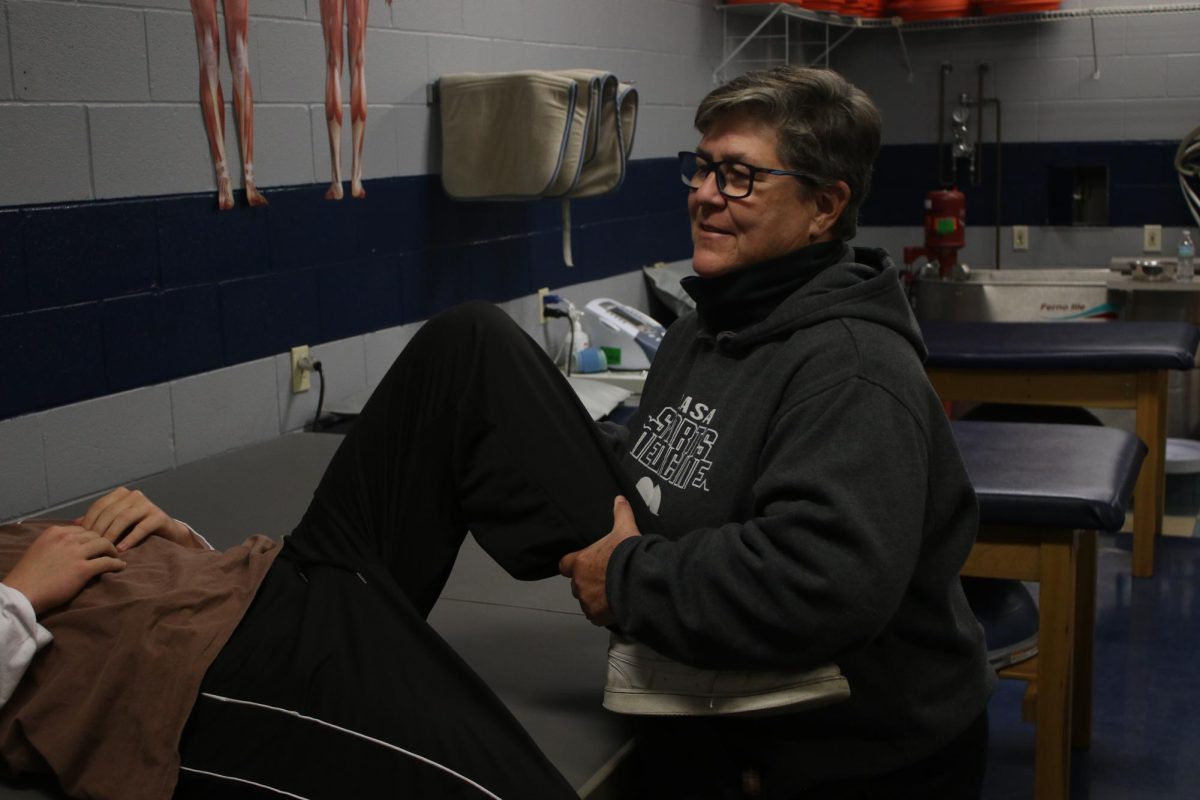The University of Texas at Austin (UT) made headlines this year for surging to the number one ranking for college football. Since that peak at the no. 1 spot, UT football is, as of Dec. 4, ranked no. 2 in the nation. UT’s athletic success also extends outside of football, with an Associated Press October preseason poll showing UT women’s basketball as ranked fourth. At the global level, moreover, UT athletes continued to impress, earning a total of 16 gold medals at the 2024 Paris Olympics.
LASA junior Wyatt Fenton competes for Longhorn Aquatics, a UT water sport program for competitive Austin residents for both swimming and water polo. He explained that after seeing UT’s domination in athletics, many high school athletes are excited at having such talent close to home.
“We just did really well in NCAAs (National Collegiate Athletics Association competitions) recently,” Fenton said.
Fenton credits a significant amount of UT swim’s success to the coaching staff, particularly their ability to improve athletes without pushing too hard. A number of UT’s head coaches have had previous experience coaching sports at other universities.
“From what I’ve seen of the coaching, and just knowing the coaches, they seem like they have a good level of intensity,” Fenton said. “They’re strict and try and get you to work hard, but they’re also focused on getting you better, getting people better in their skills and their endurance.”
Intramural sports at UT, which are played within recreational leagues organized by universities, have also found success. Sam Gonzalez is a UT student who played intramural sand volleyball at UT, which only holds competitions between teams within the university.
“Last year, our volleyball team was insanely good,” Gonzalez said. “Our basketball team’s two and one right now.”
Gonzalez credited UT’s success to talented students who come from all over the state and country. He also finds that the intramural sports at UT are also competitive, and he plans to enroll in intramural soccer through UT’s RecSports program.
“Our receiver today, Golden, got two touchdowns, so he’s getting some clout,” Gonzalez said. “When [Arch Manning] goes in, the crowd goes wild.”
Other sports at UT, such as tennis and cross country, have also performed well and reached the regional level of competition. According to LASA junior Rebecca Van Bavel, the quality of UT’s athletics coaching staff extends far beyond the pool.
“I think a very important part of their success is their coaching… coaching is a huge part of your performance in any sport,” Van Bavel said. “I’ve met the UT women’s basketball coach and I know the players speak highly of him.”
Van Bavel, along with the LASA varsity girls’ basketball team, also got the opportunity to meet a basketball player for UT. The athlete credited the coaching to UT’s identity as a flagship school for the UT system, being the largest and most enrolled in the state.
“I remember the player describing a certain strictness that also wasn’t really mean,” Van Bavel said. “She was talking about how she had coaches that would call someone fat because they didn’t run fast enough or do whatever. She was describing that [Schaefer] was a very motivating coach, but not in a sexist or derogatory way.”
A significant part of the funding received by UT women’s sports comes from Title IX funding. Van Bavel believes that this piece of federal legislation is critical to promote equality among men and women’s sports.
“Women’s sports get so much money because they need to put equal money into men’s and women’s sports,” Van Bavel said. “Title IX, [which passed] in the 70s, requires equal amounts of money to be spent on mens and womens sports. It means that women’s rowing teams, women’s soccer, and womens basketball do great. Because football has such big budget requirements, lots of money gets spent for women’s sports, too.”
Fenton expressed his appreciation for the pools at UT which he believes contributes to a part of UT’s success. Six of the 16 gold medals won by both former and current UT athletes in the 2024 Olympics were for swimmers.
“The facilities are really nice: they’ve got cool water and really deep pools which is really nice for water polo,” Fenton said. “It’s like the 7th best pool in the world, which is fantastic, and it’s very distinctive because it’s all orange and white and it’s got all sorts of UT memorabilia with all of the national championships.”
LASA junior Mia Lopez, a LASA swim team captain, has practiced in UT’s swimming pools, which are available to youth under 18 years old for $7 and adults 18 and older for $14. She emphasized how the quality of the pools at UT make her a better athlete.
“I like the pool a lot at UT,” Lopez said. “I think it’s a very fast pool. A fast pool essentially means that when the temperature is right, when the chemical balance is right, you can just feel how the water moves when you’re swimming.”
As new winter and spring seasons start, it remains to be seen whether or not this winning streak will remain, but Gonzalez is hopeful about his school’s athletic prospects. He believes students who compete at the high school level can look up to UT as a paragon of success in both academics and athletics, and enjoy the benefits of living in a city with an associated university that possesses such a strong athletic program.







